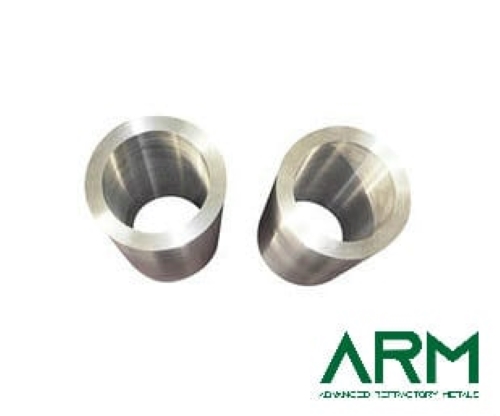Tungsten Alloys: Exploring the Common and the Exceptional
Post Views:
994
Introduction
Tungsten, known for its extraordinary density, high melting point, and strength, is often combined with other metals to form tungsten alloys. These alloys are engineered to leverage tungsten’s inherent properties while enhancing certain characteristics for specific applications. This article will discuss the most common tungsten alloys, their unique properties, and the exceptional applications.
5 Common Types of Tungsten Alloys
1. Tungsten Nickel Iron (W-Ni-Fe) Alloy
Tungsten nickel iron (W-Ni-Fe) combines tungsten’s density with the ductility and machinability of nickel and iron. This alloy is commonly employed in high-density applications where strength and durability are paramount.
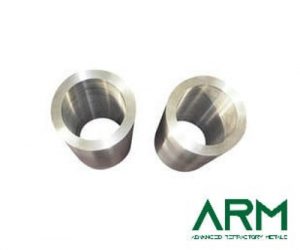
- Radiation Shielding: Due to its high density and radiation-absorbing capability, W-Ni-Fe alloys are used in medical and industrial radiography, as well as in nuclear applications.
- Balancing Weights: These alloys are used in aircraft, automotive, and other precision industries where balancing weights are crucial for performance.
- Military Applications: The alloy’s strength and density make it suitable for armor-piercing ammunition and other defense-related uses.
2. Tungsten Nickel Copper (W-Ni-Cu) Alloy
Similar to W-Ni-Fe alloys, tungsten nickel copper (W-Ni-Cu) alloys offer high density and good machinability. However, the absence of iron makes this alloy non-magnetic, which is advantageous in specific applications. Common applications include:
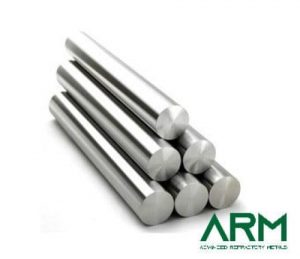
- Electrical Contacts and Electrodes: W-Ni-Cu alloys are used in electrical applications due to their excellent conductivity and non-magnetic properties.
- Medical Devices: The non-magnetic nature of this alloy makes it ideal for use in environments where magnetism must be minimized, such as in MRI-compatible devices.
- Radiation Shielding: Like W-Ni-Fe, W-Ni-Cu alloys are also used in radiation shielding, particularly where non-magnetic properties are desired.
3. Tungsten Carbide (WC)
Tungsten carbide is a tungsten alloy that stands out due to its exceptional hardness and wear resistance. It is one of the hardest materials known and is commonly used in tools and machinery.
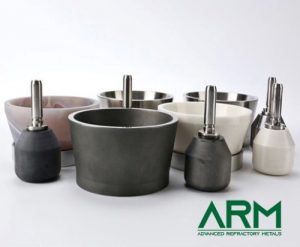
- Cutting Tools: Tungsten carbide is extensively used in drill bits, cutting tools, and milling equipment, where extreme hardness and durability are required.
- Mining and Construction: The alloy’s wear resistance makes it ideal for use in mining and construction equipment, including drill bits, saw blades, and crushing machinery.
- Industrial Machinery: Tungsten carbide is used in various industrial components where resistance to abrasion, corrosion, and wear is critical.
4. Tungsten Rhenium (W-Re) Alloy
Tungsten rhenium (W-Re) alloys combine tungsten’s high melting point with rhenium’s ability to improve ductility and high-temperature performance. This alloy is often used in extreme environments where materials must withstand high temperatures and thermal cycling.
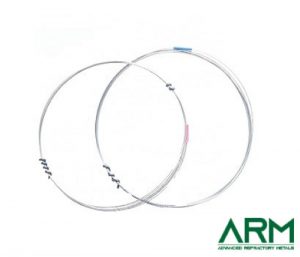
- Thermocouples: W-Re alloys are used in high-temperature thermocouples for accurate temperature measurement in furnaces, jet engines, and other extreme environments.
- Aerospace Components: The alloy’s ability to retain its strength at high temperatures makes it ideal for use in aerospace applications, such as rocket nozzles and turbine blades.
- Electronics: W-Re alloys are used in electronic components where stability and durability at high temperatures are required.
5. Heavy Tungsten Alloys
Heavy tungsten alloys are a group of tungsten-based materials typically composed of tungsten combined with nickel, iron, copper, or other metals. These alloys are known for their high density and are often used in applications requiring maximum weight in a small volume.
- Ballast Weights: Heavy tungsten alloys are used in the aerospace and automotive industries as ballast weights to balance equipment or vehicles.
- Vibration Damping: These alloys are used in applications where vibration damping is crucial, such as in precision machinery and gyroscopes.
- Counterweights: The alloys are also used as counterweights in elevators, cranes, and other industrial machinery.
List of “The Most” Tungsten Alloys:
- Most Commonly Used Tungsten Alloy:
Tungsten Nickel Iron (W-Ni-Fe): Widely used due to its high density, machinability, and strength, often in counterweights, radiation shielding, and military armor-piercing ammunition.
- Hardest Tungsten Alloy:
Tungsten Carbide (WC): Known for its extreme hardness, nearly as hard as diamond, used in cutting tools, mining equipment, and wear-resistant parts.
- Most Thermally Stable Tungsten Alloy:
Tungsten Rhenium (W-Re): Maintains strength and performance at temperatures over 3000°C, mainly used in aerospace engines and high-temperature thermocouples.
- Least Magnetic Tungsten Alloy:
Tungsten Nickel Copper (W-Ni-Cu): Non-magnetic, making it ideal for medical equipment and electronics that require minimal magnetic interference.
- Densest Tungsten Alloy:
Heavy Tungsten Alloys: Extremely high density, exceeding 19 g/cm³, used in applications requiring high mass in a small volume, such as aerospace counterweights and vibration dampers.
- Most Corrosion-Resistant Tungsten Alloy:
Tungsten Copper (W-Cu): Excellent corrosion resistance, especially in electrical contacts and high-temperature environments, commonly used in electrical contacts and heat sinks.
7 Common Applications and Related Tungsten Alloys
- Aerospace: W-Ni-Fe for counterweights and inertia dampers; W-Re for engine nozzles and turbine blades.
- Military and Defense: W-Ni-Fe for armor-piercing cores; Heavy Tungsten Alloys for armor and high-density protective materials.
- Medical Devices: W-Ni-Cu for MRI-compatible shielding; W-Ni-Fe for radiation protection and isotope containers.
- Electronics and Electrical: W-Cu for high-temperature contacts and heat sinks; W-Ni-Fe for precision electrodes and connectors.
- Machining and Tools: WC for cutting tools and drills; W-Cu for EDM electrodes due to good conductivity and machinability.
- Nuclear Industry: W-Ni-Fe for reactor shielding; W-Ni-Cu for radiation shielding in non-magnetic environments.
- Sporting Goods: W-Ni-Fe for golf clubs and precision sports equipment; WC for ski edges and high-wear sports equipment.
Related reading: Application of Tungsten And Tungsten Alloys
Conclusion
Tungsten alloys offer a remarkable combination of properties that make them indispensable in various industries. From the common tungsten nickel iron alloys used in radiation shielding to the exceptional tungsten rhenium alloys that withstand the highest temperatures, these materials are crucial in fields ranging from aerospace to medical devices.
As technology continues to advance, the role of tungsten alloys will only grow, driven by their unmatched strength, density, and resistance to extreme conditions. Tungsten alloys continue to be a cornerstone of modern material science. For more metal and alloy products, please check Advanced Refractory Metals (ARM).
